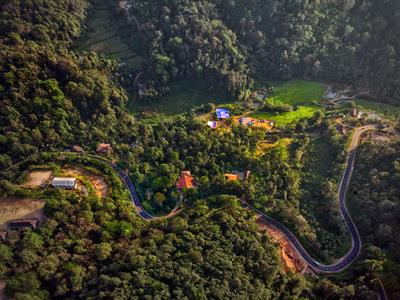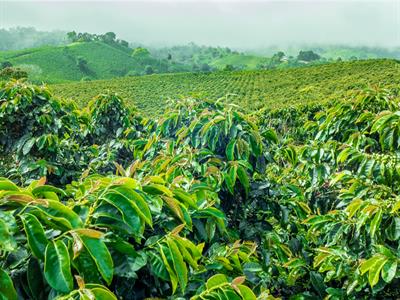
PUMPA - SMART LEARNING
எங்கள் ஆசிரியர்களுடன் 1-ஆன்-1 ஆலோசனை நேரத்தைப் பெறுங்கள். டாப்பர் ஆவதற்கு நாங்கள் பயிற்சி அளிப்போம்
Book Free DemoGlimpses of India - Part II", written by Lokesh Abrol, discusses a beautiful, heavenly place named Coorg that lies in the district of Karnataka, India, located exactly between Mysore and the coastal town of Mangalore. Karnataka is located on the western coast of India. According to the narrator, this place is a piece of heaven which must have drifted from the kingdom of God. It is a place with low, uneven hills. Thus, Coorg is said to be a land of rolling hills as it has many rolling hills.
These rolling hills could have been formed either by mountain erosion or formed by erosion when soil materials from other places get settled near hills.

Coorg*
According to the author, Coorg is inhabited by brave warriors, pretty women and wild animals.
As previously mentioned, Coorg is one of Karnataka's most well-known hill stations and is covered in hills; this place is also known as "Kodagu." There are coffee, spice, and evergreen rainforests in this region. Additionally, these evergreen forests make up around 30% of the Coorg hill station.
During the monsoon, Coorg experiences intense rainfall that prevents outside visitors from arriving. Visitors can visit Coorg from September through March, which is the best time to go there after the period of heavy rain has passed. The air would be filled with the strong aroma of coffee because there are coffee plantations nearby, and the weather would be excellent, with little rain throughout this time. The overabundance of nature has buried coffee farms and colonial homes within such a dense jungle.

Coffee plantation
A part of Alexander's army is said to have come here since they couldn't return, and the people of Coorg are thought to be of Greek or Arabic ancestry. They settled down and started getting married to the locals. As a result, their culture has been reflected in the marriage and religious rites, which are different from mainstream Hindu practices.
Additionally, as Coorg people typically wear long, black coats with embroidered waistbelts, this served as additional proof that Kodavus are descended from Arabs since this dress code resembles the Kuffia worn by Arabs and Kurds.

Kodava attire**
The author discusses the Coorgi people's friendly hospitality and emphasises how pleased they would be to share the valiant accomplishments of their sons and fathers. Kodavus are courageous people, as shown by the various accolades the Coorg regiment of the Indian army has won throughout the years.
Furthermore, the first Chief of the Indian Army was General Cariappa, a Coorgi. Additionally, only Kodavus or Coorgis are allowed to carry firearms openly in India without a licence, demonstrating the trustworthiness of the Coorgi.
The Cauvery River, a significant river in South India, originates in the woods and hills of Coorg, which are situated on the Brahmagiri highlands close to Bhagamandala. The Mahaseer, a sizable freshwater fish, is abundant in this river. In this river, Kingfishers dive to capture fish, squirrels, and langurs play by eating fruits and tossing them into the water. Elephants take pleasure in having their mahouts clean them as they bathe.

Mahaseer fish
A mahout is a person who drives and takes care of elephants.
The author discusses the distinctive features of the place Coorg and adds that this location can turn even the least active people into the most ardent explorers with more athletic activities like rafting, canoeing, rappelling, rock climbing, and mountain biking.
Also, the author says the hills have various pathways that the previous trekkers formed; and the place is fully surrounded by birds, bees and butterflies, which seem to be a companion for people; Macaques, Malabar squirrels, langurs and slender loris keep a watchful eye from the tree canopy. If we talk about nature, it is not only about the beauty but also the wildlife that can be seen here.
In conclusion, the author says that to look at the entire Coorg hill station, one must climb up to Brahmagiri hills. And a walk through a rope bridge would lead to the sixty-four-acre island of Nisargadhama, a famous island of Coorg. Moreover, nearby that place lies Bylakuppe, India's largest Tibetan settlement, where Buddhist monks reside in their typical red, ochre and yellow robes.
The author concludes by saying 'Coorg' is the heart and Soul of India.
Reference: